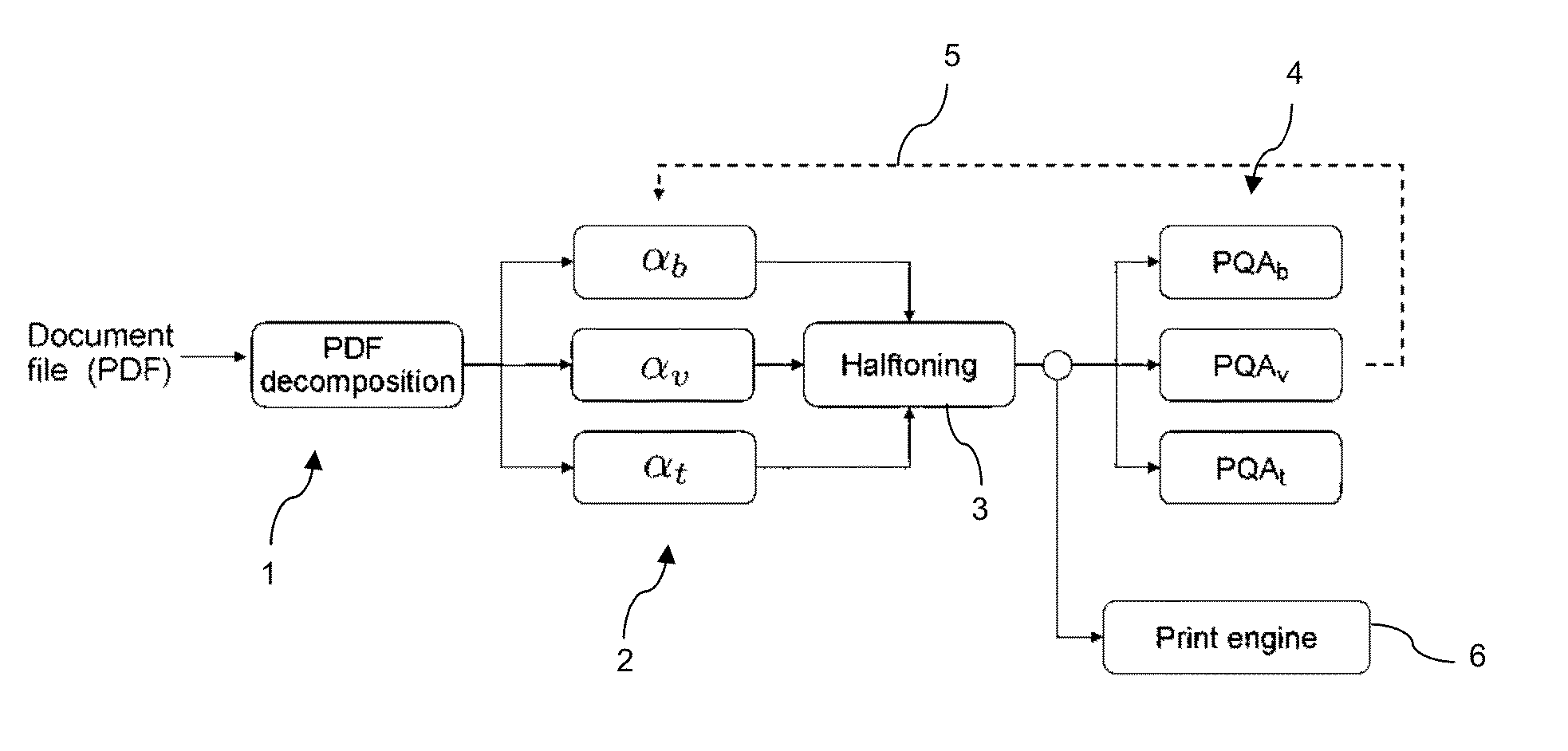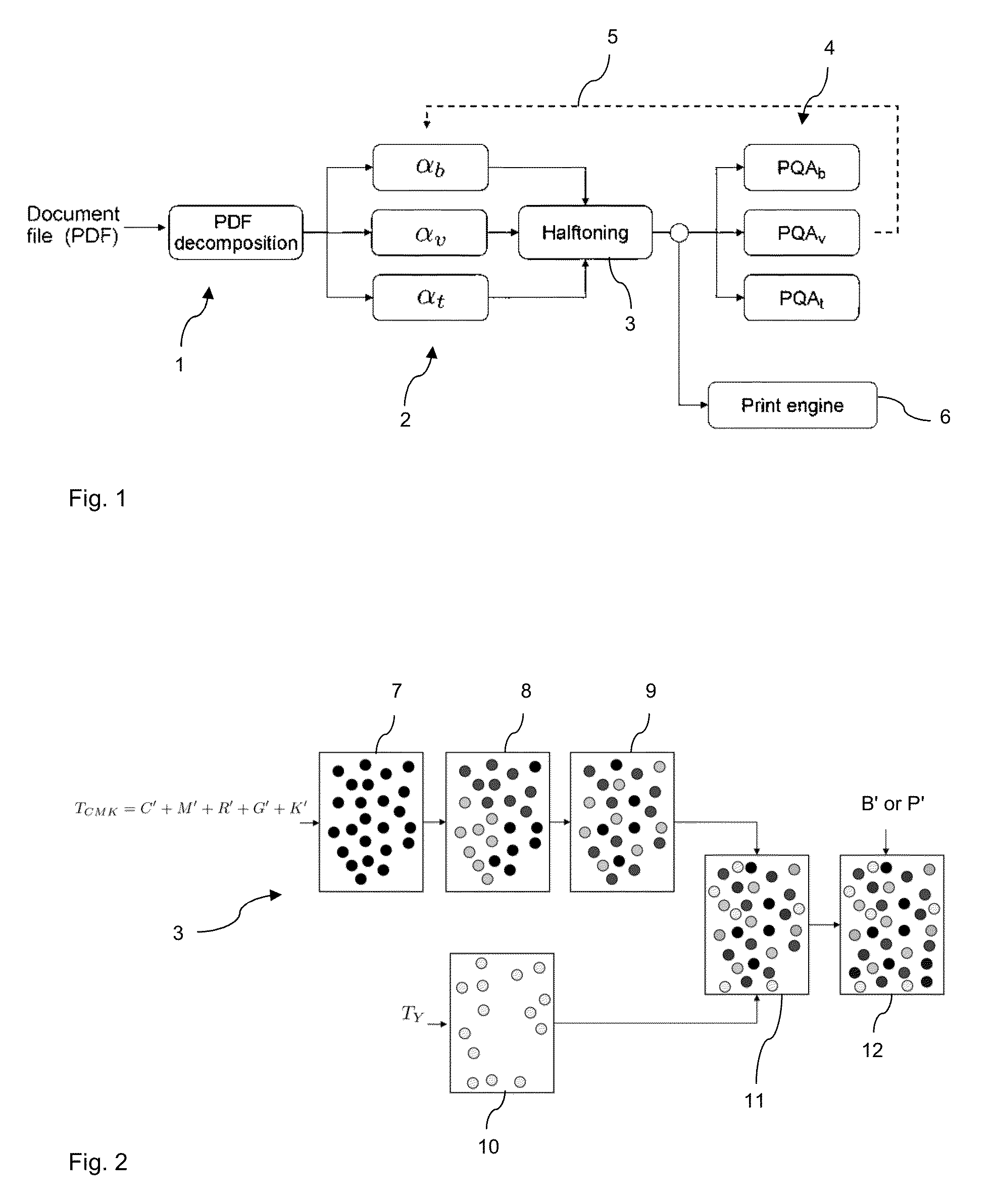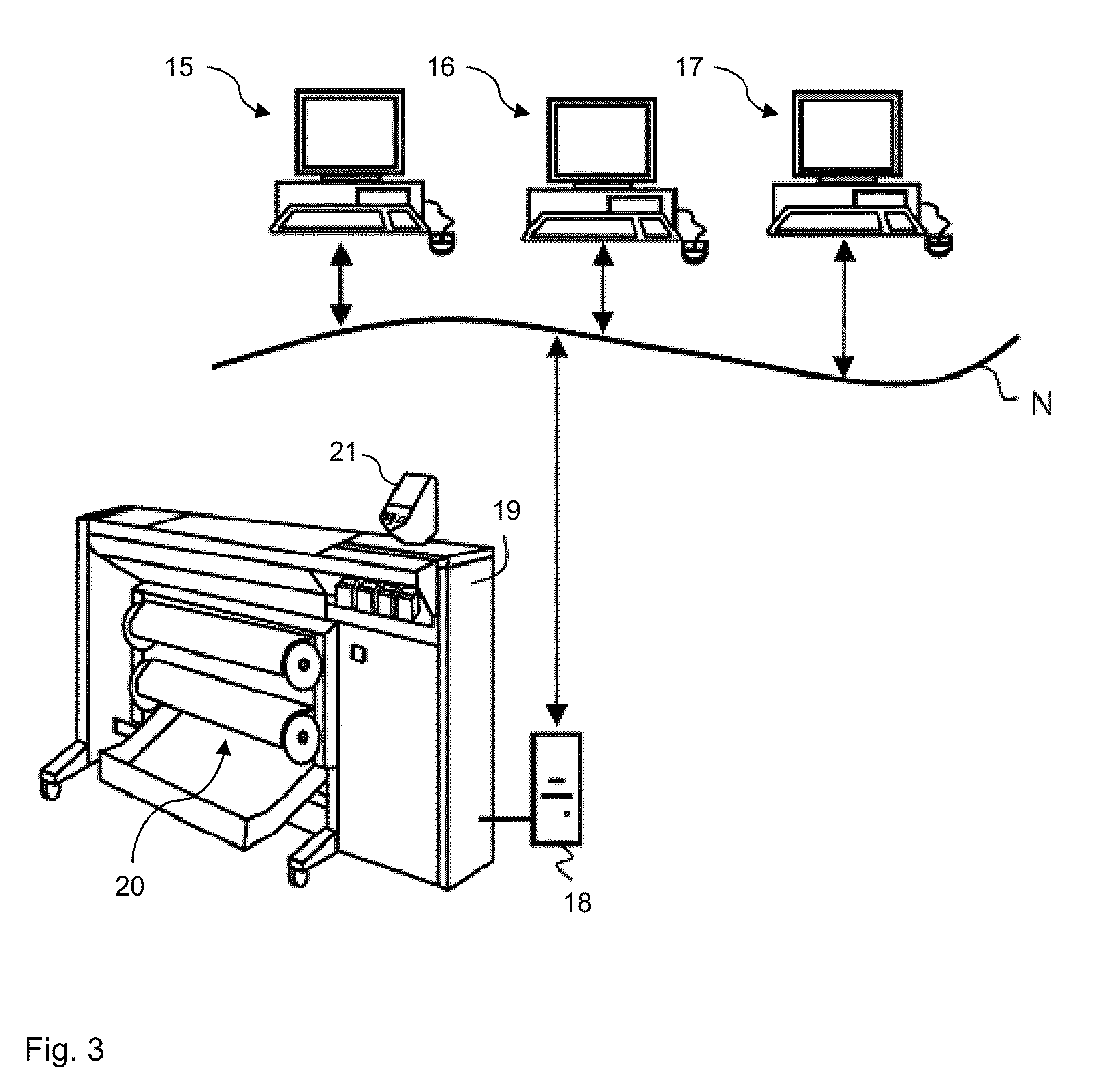Method for combining direct binary search halftoning with ink saving
a binary search and ink saving technology, applied in the field of direct binary search halftoning and ink saving, can solve the problems of reducing ink usage, pastels and skin tones in danger of developing grainy appearance, and the visual quality of printed documents may also be affected, so as to minimize the perceived error, and minimize the perceived error
- Summary
- Abstract
- Description
- Claims
- Application Information
AI Technical Summary
Benefits of technology
Problems solved by technology
Method used
Image
Examples
Embodiment Construction
[0013]In FIG. 1 the main components of the invented ink-saving strategy for a CMYK printer are shown. After a document file is received in a PDF decomposition module 1, it is decomposed into regions corresponding to bitmap or pictorial image (b), vector (v) and text (t) information. Vector information refers to line drawings and further drawings generated by a CAD-application. For each of these regions a different percentage for CMY colorant replacement by K is applied in the colour separation module 2. The resulting image is the input for a halftoning module 3 that determines a dot pattern that is adapted to the image using a Direct Binary search (DBS) and a human visual system model to evaluate the fit between the dot pattern and the image. In a further module 4 a number of Print Quality Attributes, such as graininess, smoothness and sharpness are evaluated. Each region may be associated with different weight factors for the various attributes. A feedback loop 5 may be necessary t...
PUM
 Login to View More
Login to View More Abstract
Description
Claims
Application Information
 Login to View More
Login to View More - R&D
- Intellectual Property
- Life Sciences
- Materials
- Tech Scout
- Unparalleled Data Quality
- Higher Quality Content
- 60% Fewer Hallucinations
Browse by: Latest US Patents, China's latest patents, Technical Efficacy Thesaurus, Application Domain, Technology Topic, Popular Technical Reports.
© 2025 PatSnap. All rights reserved.Legal|Privacy policy|Modern Slavery Act Transparency Statement|Sitemap|About US| Contact US: help@patsnap.com



